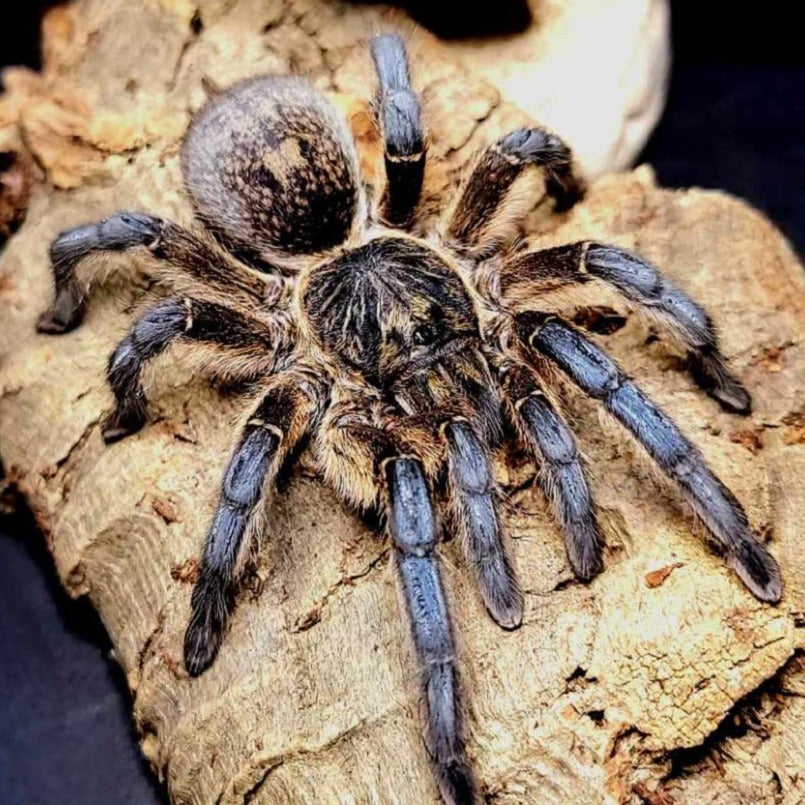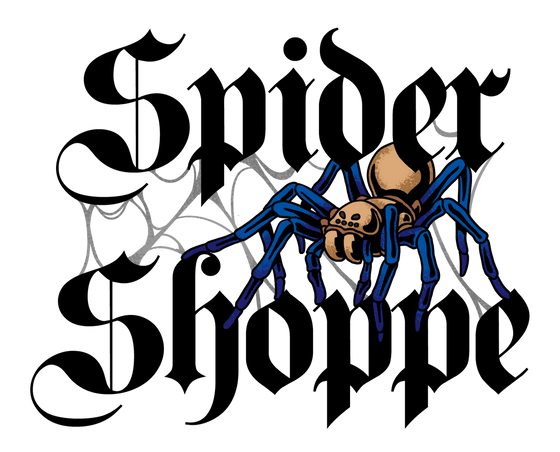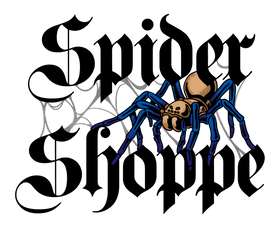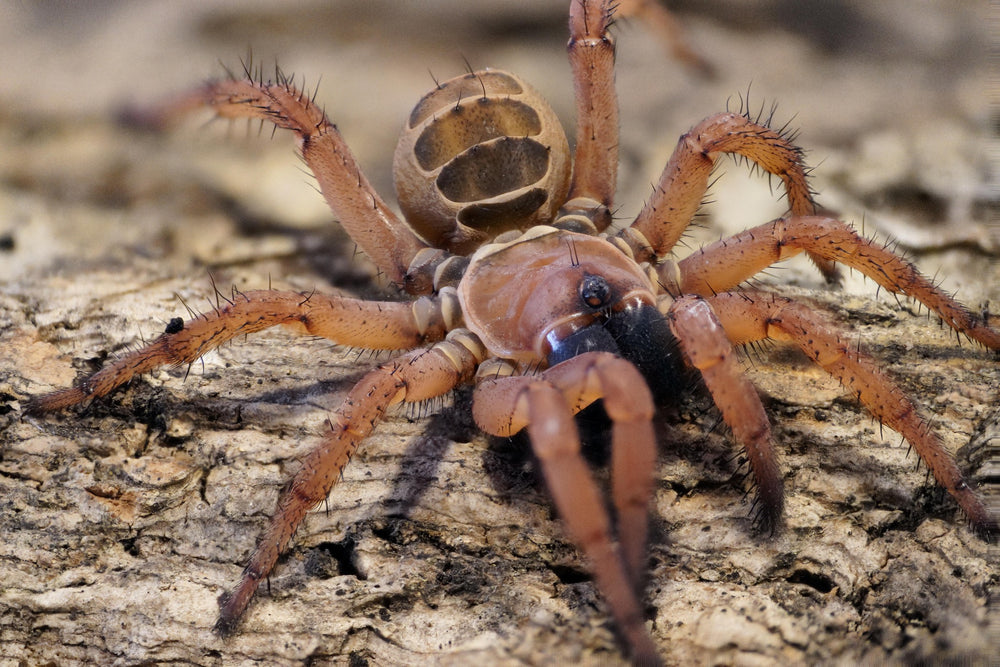
Harpactira pulchripes (Golden Blue-Legged Baboon) 0.5" | 4" FEMALE
- Live Arrival Guarantee
- Live Animals Ship FedEx Priority Overnight (Mon-Weds)
- In stock, ready to ship
- Inventory on the way
Photo by Dylan Tinney, Eight Deadly Sins
The Golden Blue Leg Baboon Tarantula, Harpactira pulchripes Pocock is certainly amongst the most strikingly colored theraphosids from the African continent and a gem of the tarantula world. At maturity, these members of the subfamily Harpactirinae (baboon spiders) are characterized by having charcoal-colored chelicerae along with a golden to rusty orange carapace, femurs and abdomen with ashy bean-like flecks alluding to their underlying black exoskeleton. However, the dorsal face of the patella through tarsus of each leg screams gorgeous metallic, electric sky blue outlined in a pinstripe margin of black, with the ventral face of the leg wildly contrasting with fiery gold tones. Under some lighting, the blue portions of the legs also take on a nice tinge of gray, resmbling metallic blue jeans. If you want a wildly colorful baboon spider H. pulchripes is in a league of its own.
H. pulchripes is an Old World fossorial (burrowing) tarantula reaching 5-6 inches in diagonal leg span. As a member of the tarantula subfamily Harpactirinae, this species is shy, lightning fast, but highly defensive and equipped with strong venom. It is therefore best not to handle or pester these spiders unnecessarily. H. pulchripes naturally occurs in hilly, dry, rocky savannas and shrublands of South Africa, where they form earthen silk tunnels into red clay or under rocks and through brush thickets close to the ground. Like just about any Old World tarantula, if given a nice, quiet place with little foot traffic, H. pulchripes will be a lot more inquisitive and chill as a cucumber. So, get a nice headlamp and set one of these gems up in a quiet, dark corner to admire. You will not regret it!
Care for H. pulchripes is easy, as these baboon spiders are tough as nails. They can be cared for similarly to members of closely-related genera such as Pterinochilus, Ceratogyrus, Augacephalus and other arid land baboon spiders. H. pulchripes grow at a fast rate, maturing within approximately two years. Spiderlings and juveniles can be maintained in enclosures with deep, airy substrate for burrowing that is kept only slightly moist through periodic misting. Larger juveniles through adults should be maintained bone dry with periodic mistings in one corner of the enclosure. These are highly adaptable tarantulas, but thrive in well-ventilated terrestrial enclosures with several inches of substrate to burrow through. Coarse-draining, airy substrates work best, such as potting soils with lots of wood pulp or cactus potting mixes. Adding a cork hide and some sticks or dead, dry leaves is appreciated by these spiders, but they really can be creative simply with soil. H. pulchripes is a copious webber and will incorporate literally anything you place into their enclosure (sticks, stones, action figurines…) into their elaborate web galleries, filling the enclosure with silk. If you want a dazzling tarantula and are fascinated by Africa’s lovely baboon spiders, you need to join the guild of proud H. pulchripes owners.
References
Pocock, R.I., 1901. XXXVII.—Descriptions of some new African Arachnida. Journal of Natural History, 7(39), pp.284-288.

Info on our shipping policy can be found on our T&C page.



